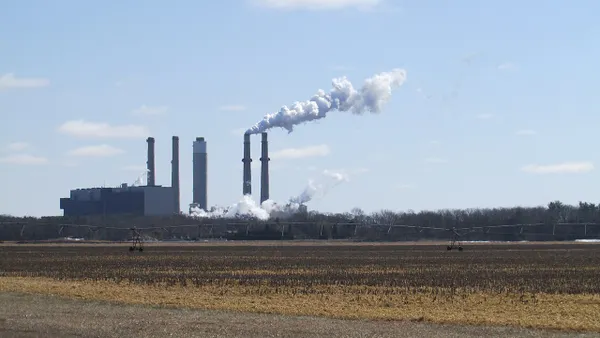Dive Brief:
- Customers of the Puerto Rico Electric Power Authority, or PREPA, are now paying 33.4 cents/kWh for electricity — nearly double the rate they paid just two years ago, the Institute for Energy Economics & Financial Analysis said Thursday in an assessment of the island’s grid transformation plan.
- The Financial Oversight and Management Board for Puerto Rico, or FOMB, certified PREPA’s updated fiscal plan in June, outlining how the island’s fragile grid can be modernized and shifted away from fossil fuel generation.
- But IEEFA maintains the plan does not move fast enough to adopt renewable energy, and that a more rapid transformation away from fossil fuels could help reduce rates to 20 cents/kWh. Two years ago, customers paid about 17.4 cents/kWh, according to the analysis.
Dive Insight:
Puerto Ricans are paying about 8% of their income for electricity, compared with an average of 2.4% across the United States, IEEFA noted in its analysis.
“The only way to stabilize rates and PREPA’s budget over the medium to long term is to aggressively invest in renewable energy and to use billions of dollars of available federal funds to transition to a more resilient, renewable-based grid,” IEEFA said.
The utility would also need to halt electric rate hikes to pay for $8.2 billion in debt, IEEFA noted.
PREPA’s fiscal plan identified several historical and structural challenges the utility faces, including “overreliance on fossil fuels with fluctuating prices for power generation.” It notes that in Fiscal Year 2021 the utility’s generation was 43% natural gas, 37% oil, 17% coal, and 3% renewable resources.
The utility is targeting 100% renewable energy by 2050, though it has faced myriad challenges in recent years including: the destruction of its electric grid in 2017 by Hurricane Maria, Covid-19, a declining population, bankruptcy and rising fuel prices in part due to the war in Ukraine.
PREPA’s grid is now managed by LUMA Energy, and last year LUMA President and CEO Wayne Stensby told lawmakers the island’s system “is arguably the worst in the U.S.” The company has rolled out some improvements, according to the fiscal plan, including reducing customer call wait times, increasing accessibility to online billing systems, and reducing lineman injury rates.
The T&D operator has also gotten initial approval for 190 grid strengthening projects representing $7.8 billion in federal funding, according to FOMB.
However, while PREPA had shown “modest improvement since 2017, metrics assessed for 2020 placed PREPA in the bottom quartile of peer utilities,” the report concluded. Puerto Rico residents and businesses “experienced far more outages for far longer periods of time,” it said.
The island’s economic recovery “depends on the comprehensive and overdue transformation of its energy sector,” FOMB Chairman David Skeel Jr. said in a June 30 statement. “When fully implemented, PREPA’s transformation will provide Puerto Rico with a resilient and modern electric grid and more efficient and cleaner power generation.”
The board also said it has been working to reduce PREPA’s debt “to sustainable levels and aims to reach consensual agreements with creditors and other interest parties as soon as reasonably possible,” Skeel added.
But IEEFA maintains the plan still spends too much on gas-fired generation, alongside its investment in renewables.
“The federal resources available to Puerto Rico for the grid must be used well,” the group said. “The plan warns that the funds may not be enough to cover actual costs. More resources will be needed for the system to meet its resiliency goals.”














